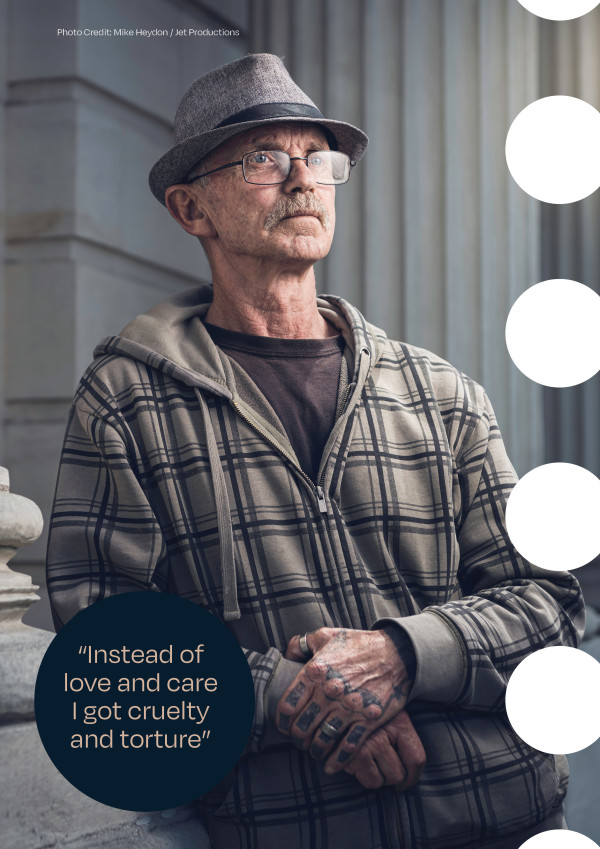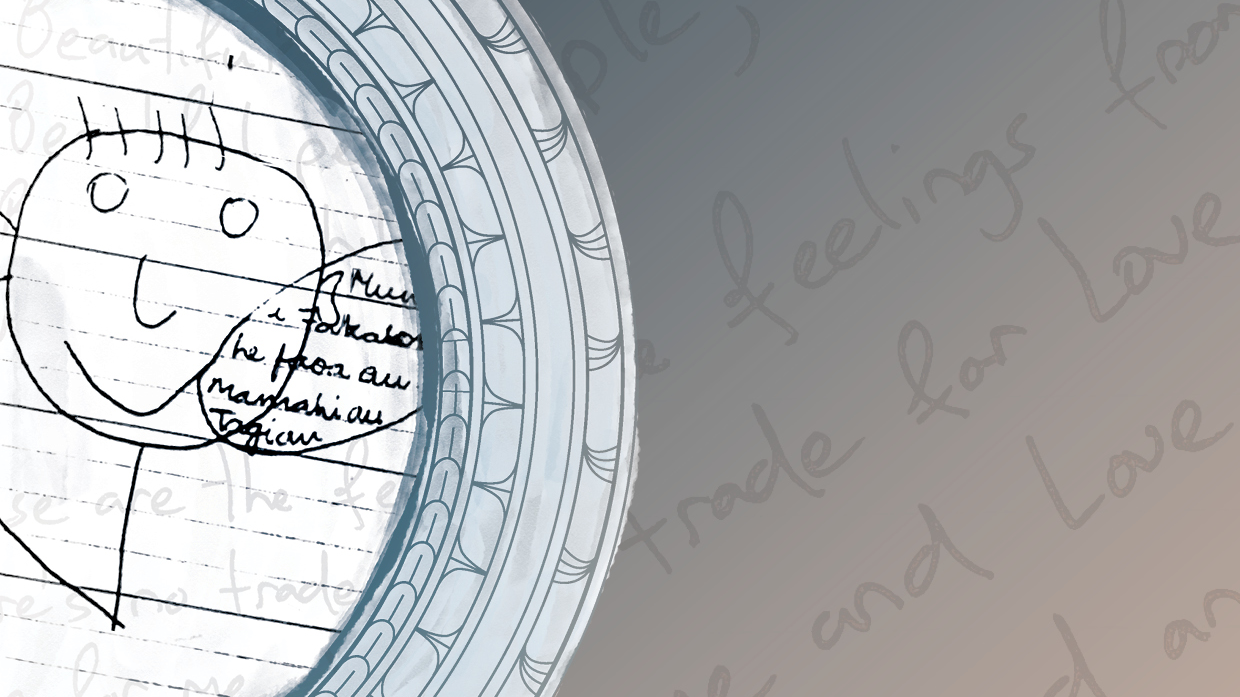Bryon Nicol
Name: Bryon Nicol
Age when entered care: 11
Age now: 61
Hometown: South Island
Time in care: 1972-1978
Type of care facility: Boys’ homes – Stanmore Boys’ Home, Holdsworth School, Hokio Beach School, Kohitere, Dunedin Boys’ Home; psychiatric hospital – Lake Alice; borstal – Invercargill.
Ethnicity: European
Whānau background: Seventh of eight children.
Currently: Married with four children, Bryon and his wife are grandparents.
 Bryon Nicol
Bryon Nicol
The first time they gave me electric shocks I went willingly, because I didn’t know what it was. After that I was like all the other boys – they had to drag me up the stairs. I was absolutely petrified.
‘ECT’ was given on a Friday, always unmodified – no anaesthetic or muscle relaxant beforehand. My first time getting electric shocks was also the first time I remember meeting Dr Selwyn Leeks. I was on the bed with a rubber mouthguard in. The machine gave me vicious pain and made me feel dizzy, with fuzzy lines running through my brain. My arms and legs flailed about in agony. You just wouldn’t believe how bad the pain was.
They would call your name while you were having lunch, and that meant you had to stay. We were taken to a day room and locked in, so we couldn’t escape. I was often so scared that I soiled myself.
I only saw Dr Leeks when he gave me electric shocks and I soon became terrified of him. I’d see his Kombi van pulling up in the grounds and terror would run through me. My life became about survival – I was in such a state of fear and misery every day, it wasn’t possible to make friends or learn anything. Unmodified ECT was given as a punishment – it seemed that how long you got it for depended on how ‘bad’ the staff thought you had been that week. I tried to run away once, so Dr Leeks gave me electric shocks on my feet to teach me a lesson. The pain was worse because it ran up into the rest of my body, whereas if you had shocks on your head, the pain stayed there.
I was also raped by another patient repeatedly and when I told the staff, they didn’t believe me – and punished me for “lying” by giving me more electric shocks. My records show I was even given shocks for “showing off in front of the girls”. You just got what was given to you, you had no control over anything.
I had a hard time at school and I was always being punished for how I was. I’d been in trouble for breaking and entering, and I was a super-hyperactive child, just wired all the time and jumping off the walls with energy. Today they’d call it ADHD. To add to that, we had a hard family life for a lot of reasons and I didn’t have a happy or easy childhood.
My notes say I was admitted to Lake Alice because of “hysterical character disorder and suicidal gestures”. There was an incident when I climbed to the top of a cathedral in Christchurch and called out that I was going to kill myself. I wasn’t, though – I was just being naughty and trying to get attention.
I told my Mum what was going on, but she didn’t believe it. She did write to Dr Leeks to complain about the lack of information about my progress, and they told her it was none of her business as I was a state ward.
My life has been totally screwed up following the ‘treatment’ I got in Lake Alice. I have a lot of pain – muscle pain and pins and needles in my legs and feet. I’m still haunted by the trauma, and I live it in my mind and body daily. In particular, the memories of being raped, the sight and smell of urine and faeces swelling up in our pants and dripping down while waiting for electric shocks, and begging for help but being called a liar and punished for it. These are the worst memories, and they flash up every day.
Being in care made me feel like I was just a piece of shit to staff and authorities. It wasn’t a caring environment, and I never felt like anyone valued me. I reckon I had ADHD, and instead of love and care and help with it, I got cruelty and torture and was made to feel like a worthless human being.
I went to jail at one point. I taught myself to read while I was there, and after I got out I met my wife and she helped me turn my life around. I’d started drinking to numb the memories but now I haven’t drunk alcohol for 14 years. My wife is endlessly patient and so amazing – she had been in care too, so she understood me. I reckon I would be dead long ago if I hadn’t met her.
For me, the inquiry has always been about a proper apology from the Government and to make sure it never happens to another child, ever again. That’s my priority.

